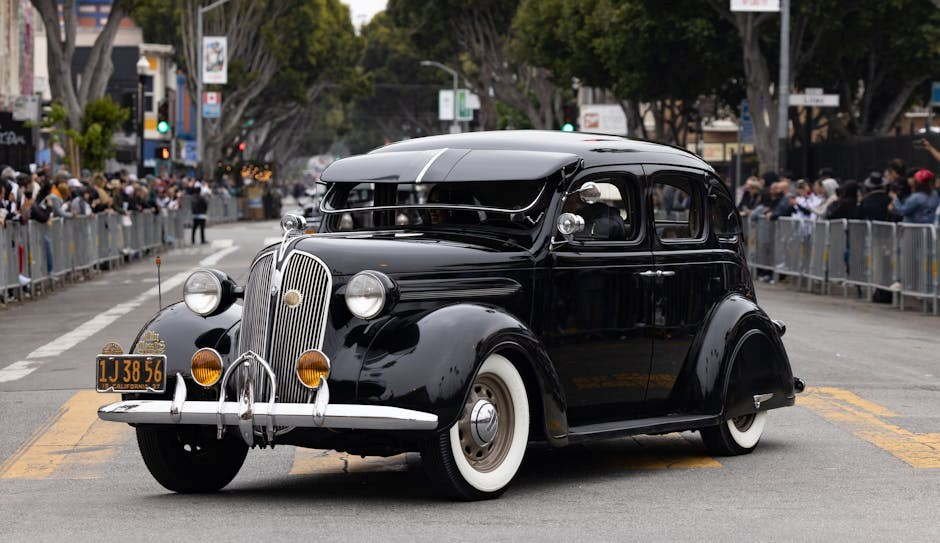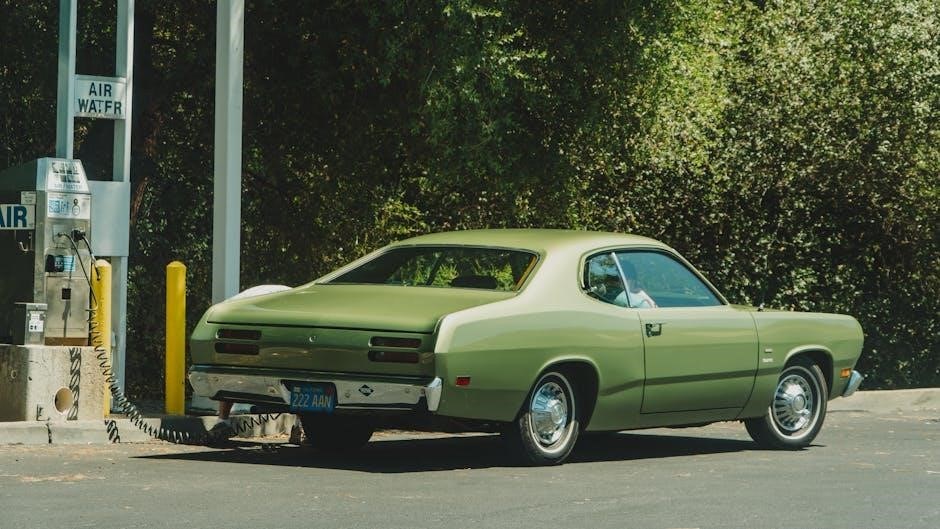California car seat laws prioritize child safety through age, weight, and height-based regulations, ensuring proper restraint systems for children under 16, promoting safe travel and legal compliance;

Overview of the Importance of Car Seat Safety
Car seat safety is crucial for protecting children from injuries or fatalities in vehicle accidents. According to California law, car seats are designed to absorb crash forces, distribute impact, and keep children securely in place. Properly fitted car seats can reduce the risk of fatal injury by 71% for infants and 54% for toddlers. California’s car seat regulations are based on age, weight, and height to ensure optimal protection at every stage of a child’s growth. Compliance with these laws not only saves lives but also aligns with proven safety standards. By prioritizing car seat safety, parents and caregivers can significantly reduce the risks associated with vehicle travel for children.

Key Objectives of California Car Seat Regulations
The primary objective of California car seat regulations is to minimize the risk of injury or fatality for children in vehicle accidents. These laws aim to ensure that all children are properly restrained according to their age, weight, and height. By mandating the use of appropriate car seats, booster seats, and rear-facing seats, the regulations promote optimal protection for children during travel. Additionally, the laws emphasize adherence to manufacturer guidelines for car seat installation and usage. The key goal is to create a safer environment for children in vehicles while ensuring compliance with evidence-based safety standards. This approach helps reduce the likelihood of severe injuries and fatalities, safeguarding children as they grow and develop.
Age Requirements for Car Seats in California

Children under 8 years old must use a car seat or booster seat, with specific requirements for rear-facing seats under 2 years old and forward-facing seats for ages 2-8.
Children Under 2 Years of Age
In California, children under 2 years old are required to use a rear-facing car seat. This is a critical safety measure, as rear-facing seats provide optimal protection for young children’s developing necks and spines. The law mandates that all children under 2 must remain rear-facing until they outgrow the weight or height limits of their car seat. Parents should ensure the seat is properly installed and fits the child snugly. Additionally, children should not be moved to a forward-facing seat prematurely, even if they reach the upper weight or height limits before turning 2. This age requirement is strictly enforced to minimize the risk of injury in the event of a crash.
Children Between 2 and 8 Years of Age
In California, children aged 2 to 8 years must use a forward-facing car seat or booster seat until they reach 8 years old or 4 feet 9 inches tall. This ensures proper protection as they grow and develop. Once a child outgrows the weight or height limits of their forward-facing seat, they must transition to a booster seat. Booster seats position the vehicle’s seatbelt correctly over the child’s body, providing optimal safety. The law requires children to remain in a booster seat until they can safely wear a lap and shoulder belt, typically when they reach the upper limits of the booster seat or the age of 8.
Children Over 8 Years of Age
In California, children over 8 years old are no longer required to use a car seat or booster seat, provided they can safely wear a vehicle seatbelt. However, the seatbelt must fit properly, with the lap belt across the hips and the shoulder belt across the chest, not the neck or abdomen. Children must also be at least 4 feet 9 inches tall to use the seatbelt alone. While the law does not mandate car seats for children over 8, some may still need a booster seat if they haven’t reached the height or weight requirements for proper seatbelt fit. Parents should ensure their child meets these criteria before transitioning to a seatbelt-only arrangement.
Weight and Height Limits for Car Seats
California car seat laws specify weight and height limits for rear-facing, forward-facing, and booster seats to ensure proper fit and safety for children.
Weight Limits for Rear-Facing Car Seats
In California, rear-facing car seats are required for children under 2 years old or until they reach the weight or height limit of their car seat. Most rear-facing seats have a weight limit of 22-35 pounds, depending on the manufacturer. Parents must check the car seat manual for specific limits. The seat must also fit the child’s height, with their head at least 1 inch below the top of the seat. Rear-facing seats provide optimal protection for young children by distributing crash forces across the seat’s back. Proper adherence to weight and height limits ensures maximum safety and compliance with California car seat laws.
Height Limits for Forward-Facing Car Seats
In California, forward-facing car seats are required for children who are at least 2 years old or have outgrown their rear-facing seat. The height limit for forward-facing seats typically ranges from 40 to 50 inches, depending on the manufacturer. Parents should check the car seat manual for specific height restrictions. Children must use a forward-facing seat until they reach the maximum height or weight limit of the seat. Proper use ensures the harness fits snugly and the child’s head is within the seat’s shell. California law mandates strict adherence to these height limits to ensure optimal protection for children in the event of a crash.
Maximum Weight and Height for Booster Seats
In California, booster seats are required for children until they reach either 8 years of age, 4 feet 9 inches in height, or the maximum weight and height limits of the booster seat. The maximum weight for booster seats typically ranges from 80 to 120 pounds, while the height limit is generally around 57 inches. Parents must ensure the booster seat is used correctly, with the lap belt across the child’s thighs and the shoulder belt across their chest. It’s essential to consult the car seat manual for specific weight and height limits, as these can vary by manufacturer. Proper use of a booster seat ensures the seatbelt fits correctly, providing optimal protection for children until they can safely use a vehicle seatbelt alone.

Types of Car Seats Required by Law

California law requires three types of car seats: rear-facing, forward-facing, and booster seats, each designed for specific age, weight, and height ranges to ensure child safety.
Rear-Facing Car Seats
In California, children under 2 years old or weighing less than 40 pounds must use a rear-facing car seat. This type of seat is designed to cradle the child, distributing the force of a crash across the seat’s shell, which protects the child’s neck and spine. Rear-facing seats are available as infant-specific models or convertible seats that grow with the child. Parents must ensure the seat is installed correctly and meets federal safety standards. The seat must also fit the child properly, with the harness snug and chest clip at armpit level. This requirement is crucial for minimizing injury risks in the event of an accident. Always follow the manufacturer’s guidelines for weight and height limits to ensure safety.
Forward-Facing Car Seats
Forward-facing car seats are required for children who have outgrown rear-facing seats, typically when they are over 2 years old, weigh more than 40 pounds, or exceed the height or weight limits of their rear-facing seat. These seats use a harness to secure the child and must be installed with a tether to the vehicle for added stability. The harness should fit snugly, with the chest clip at armpit level, and the seat must be placed in the back seat. Parents should follow both the car and seat manufacturer’s instructions for proper installation and use. This ensures optimal protection for the child in the event of a crash. Always verify the seat’s expiration date and condition before use. Proper use of forward-facing seats is essential for child safety on the road.
Booster Seats
Booster seats are required for children who have outgrown forward-facing car seats, typically between the ages of 8 and 12, until they are at least 4 feet 9 inches tall. These seats lift the child up so that the vehicle’s seat belt fits properly across their body. California law mandates that booster seats be used in the back seat, unless the vehicle does not have a back seat. The lap belt should lie snugly across the child’s hips, and the shoulder belt should cross the chest, avoiding the neck. Children must remain in a booster seat until they can safely wear the vehicle’s seat belt without assistance, usually around 4 feet 9 inches tall or age 16. Proper use ensures the seat belt functions as intended. Always check the seat’s expiration date and condition. Booster seats are essential for children’s safety until they can use adult seat belts correctly.
California Laws on Car Seat Placement
Car seats must be placed in the back seat for children under 8 or below 4 feet 9 inches. Exceptions apply for vehicles without back seats or when all back seats are occupied by children in car seats. Booster seats must be used with lap and shoulder belts for proper safety;
Front Seat vs. Back Seat Requirements
In California, children under 8 years old or shorter than 4 feet 9 inches must ride in the back seat. The back seat is deemed safer due to reduced risk from airbags deploying. Exceptions exist for vehicles without back seats or when all back seats are occupied by children in car seats. When a child must sit in the front, ensure the seat is positioned as far back as possible and the car’s seat belt is used correctly. Always prioritize the back seat for enhanced safety, especially for younger children, to minimize potential hazards like frontal airbag impact.
Exceptions for Vehicle Type
California car seat laws recognize specific exceptions based on vehicle type. Vehicles without back seats, such as certain sports cars or older models, may permit a child to sit in the front with a properly fitted car seat. However, this is only allowed if all back seats are occupied by other children in car seats or if the vehicle lacks back seats entirely. Additionally, larger vehicles like trucks or SUVs may offer more flexibility due to their seating arrangements. Vehicles primarily used for delivery or work purposes, lacking passenger seating, also fall under exceptions. Classic cars with bench seats or no seat belts are typically exempt due to safety concerns. Rental or borrowed vehicles must still adhere to car seat laws unless specific exceptions apply. Vehicles with only one seat, such as motorcycles or three-wheelers, are naturally exempt as car seats cannot be safely installed. Always consult official guidelines for precise exemptions related to your vehicle type.

Special Considerations for Child Safety
California car seat laws address unique situations, such as children with medical conditions requiring specialized restraints or those in emergency vehicles, ensuring safety is prioritized. Exemptions apply under specific circumstances to accommodate individual needs while maintaining overall child protection.
Children with Medical Conditions
California car seat laws include provisions for children with medical conditions that may require special accommodations. A child with a medical condition that prevents the use of a standard car seat may qualify for an exemption. Parents or guardians must obtain a written note from a licensed physician explaining the condition and specifying the necessary accommodations. This exemption allows the use of a specialized car seat or restraint system tailored to the child’s needs. However, the exemption does not eliminate the requirement for a car seat altogether; it simply permits the use of an alternative approved device. This ensures that children with medical conditions are protected while traveling in vehicles, even if standard car seat requirements cannot be met.
Children in Emergency Situations
In California, car seat laws provide exceptions for children in emergency situations where the use of a car seat is not feasible. If a child is in immediate danger and a car seat is unavailable, the child may be secured using the vehicle’s seatbelt in the most protective manner possible. However, this exemption is strictly limited to genuine emergencies and is not a general exception to car seat requirements. Parents or caregivers must prioritize the child’s safety and seek a proper car seat as soon as possible. It’s important to note that these accommodations are temporary and do not override the overall mandate to use an approved car seat under normal circumstances. For the most accurate and updated information, consult the official California car seat law resources.

Penalties for Non-Compliance
Violating California car seat laws results in a minimum fine of $100 and a point on the driver’s record, potentially increasing insurance rates, emphasizing the importance of adhering to safety regulations to protect children.
Fines for Violating Car Seat Laws
In California, failing to comply with car seat laws can result in a minimum fine of $100 for the first offense. This fine increases for subsequent violations, with the second offense starting at $250 and the third at $500. Each violation also adds a point to the driver’s record, which can lead to higher insurance rates. The fines apply per child not properly secured, meaning multiple violations in a single incident can result in cumulative penalties. These measures aim to enforce strict adherence to car seat regulations, ensuring the safety and well-being of children while traveling. The financial consequences underscore the importance of understanding and following the state’s car seat laws carefully.
Additional Consequences for Repeat Offenses
Besides fines, repeat offenders of California’s car seat laws may face additional penalties. A second violation results in a minimum fine of $250, while a third offense increases to $500. Each violation also adds a point to the driver’s record, potentially leading to higher insurance costs. Repeat offenders may also be required to attend traffic school or complete a court-ordered child safety program. In severe cases, the court may impose community service or other corrective measures. These additional consequences aim to reinforce the importance of adhering to car seat regulations and ensuring the safety of children. The penalties escalate with each offense, reflecting California’s commitment to strict enforcement of child passenger safety laws.
Resources for Parents and Caregivers
Parents and caregivers can access official California car seat law resources, including the California Department of Motor Vehicles website and the National Highway Traffic Safety Administration (NHTSA) guides.
Official California Car Seat Law PDF
The official California car seat law PDF is a comprehensive resource provided by the California Department of Motor Vehicles (DMV) and the National Highway Traffic Safety Administration (NHTSA). This document outlines the specific age, weight, and height requirements for car seats, ensuring parents and caregivers can make informed decisions. It includes detailed charts and guidelines to help determine the appropriate car seat type for a child based on their growth milestones. Additionally, the PDF covers installation tips, exceptions, and penalties for non-compliance. Parents can download the guide for free from the California DMV website or access it through the NHTSA portal. This resource is updated regularly to reflect the latest safety standards, making it a go-to reference for ensuring compliance with state laws. Always verify the publication date for the most current information.
Where to Find Car Seat Safety Guides
California car seat safety guides are widely available through official state and federal resources. The California Department of Motor Vehicles (DMV) website provides downloadable PDFs with detailed information on age, weight, and height requirements. Additionally, the National Highway Traffic Safety Administration (NHTSA) offers a comprehensive guide tailored to California’s specific laws. Local libraries and community centers often have printed copies of these guides. Parents can also visit the California Highway Patrol (CHP) website for car seat safety tips and resources. For hands-on guidance, many hospitals and fire stations host free car seat workshops. These resources ensure parents and caregivers have access to accurate and up-to-date information to keep children safe while traveling.

Future Updates to California Car Seat Laws
California regularly updates car seat laws to reflect safety advancements and research. Future changes may extend age and weight limits, aligning with national safety standards and advocacy efforts.

Proposed Changes to Age and Weight Requirements
California is considering updates to its car seat laws, focusing on extending age and weight requirements to better protect children. Proposed changes include increasing the age limit for rear-facing seats to 4 years and boosting weight limits for forward-facing seats. Additionally, the state may raise the maximum weight for booster seats to align with newer federal safety guidelines. These adjustments aim to reduce child injuries and fatalities in car accidents. Stakeholders, including safety advocates and lawmakers, are reviewing research to ensure the changes reflect current safety standards. Parents are encouraged to monitor official updates to comply with future regulations and ensure their children travel safely.
Advocacy for Stricter Car Seat Regulations
Advocates in California are pushing for stricter car seat regulations to enhance child safety. Organizations like the California Highway Patrol and child safety groups emphasize the need for updated laws to reflect advancements in safety research. They argue that current age and weight requirements may not adequately protect taller or heavier children. Safety experts recommend extending the use of booster seats and ensuring proper fit for larger children. Public awareness campaigns are also being promoted to educate parents on the importance of strict adherence to car seat guidelines. These efforts aim to reduce child injuries and fatalities, ensuring California remains a leader in road safety.
